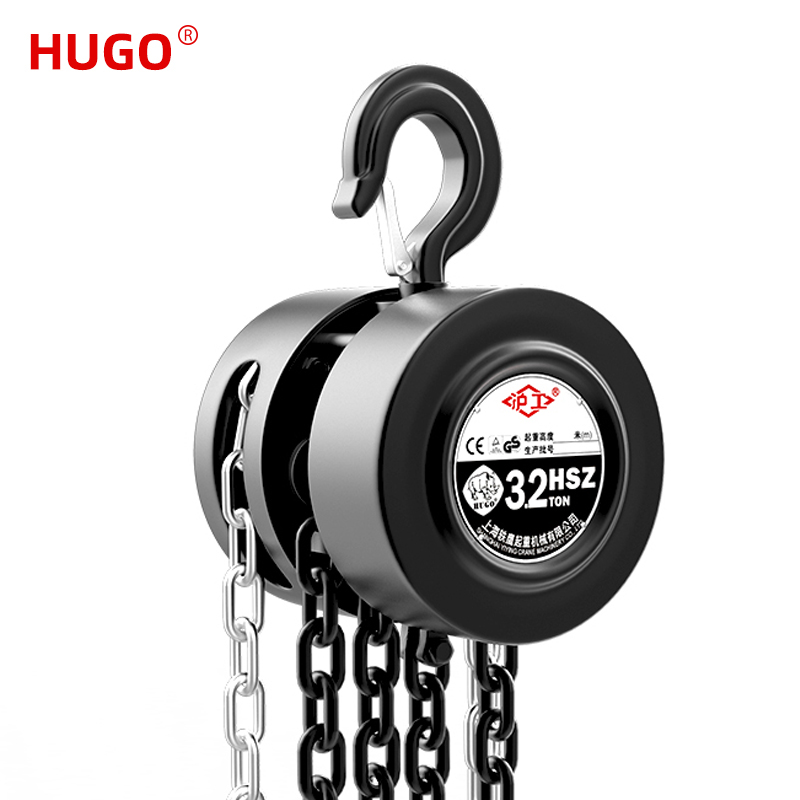Preventing Chain Block Failures: Understanding Common Causes and Solutions
2024-03-04
Introduction:
Chain blocks are indispensable tools in various industries for lifting heavy loads safely and efficiently. However, like any mechanical device, chain blocks are susceptible to failures that can pose significant safety risks and disrupt operations. Understanding the common causes of chain block failures is essential for implementing preventive measures to maintain safety and reliability in lifting operations. In this blog, we'll explore the typical causes of chain block failures and discuss strategies for preventing them.
1. Overloading:
Overloading is one of the most common causes of chain block failure. Exceeding the rated capacity of the chain block puts excessive stress on its components, leading to premature wear, deformation, or catastrophic failure. To prevent overloading, always ensure that the load being lifted does not exceed the maximum capacity specified by the manufacturer. Implementing load monitoring systems and providing training for operators on load limits and proper rigging techniques can help prevent overloading incidents.
2. Lack of Maintenance:
Poor maintenance practices can significantly contribute to chain block failures. Neglecting regular inspections, lubrication, and servicing can result in the accumulation of dirt, corrosion, and wear on critical components. Over time, this can compromise the integrity and performance of the chain block, increasing the risk of malfunctions or accidents. Establishing a comprehensive maintenance schedule that includes regular inspections, lubrication of moving parts, and timely repairs can help prevent failures due to lack of maintenance.
3. Wear and Tear:
Continuous use and exposure to harsh operating conditions can cause wear and tear on the components of a chain block. Common areas prone to wear include the load chain, load hook, hand chain, and gearbox. Wear can manifest as elongation or stretching of the load chain, deformation of load hooks, or binding of hand chains. To prevent failures due to wear and tear, conduct regular inspections to identify signs of wear and replace worn components promptly. Implementing proper lubrication and using high-quality, durable materials can also help prolong the lifespan of chain blocks.
4. Environmental Factors:
Environmental factors such as exposure to moisture, extreme temperatures, chemicals, or abrasive materials can accelerate the degradation of chain blocks. Corrosion, rust, and chemical damage can weaken the structural integrity of the equipment and compromise its safety. To mitigate the impact of environmental factors, store chain blocks in a dry, clean environment when not in use, and use protective covers or coatings to shield them from corrosive substances. Choose chain blocks made from corrosion-resistant materials or apply protective coatings for added durability in harsh environments.
5. Improper Use or Handling:
Improper use or mishandling of chain blocks can also contribute to failures. This includes using the chain block for purposes beyond its intended application, such as side loading or pulling at angles, which can cause stress and deformation of components. Additionally, dropping or mishandling chain blocks during operation or storage can lead to damage or malfunction. Providing comprehensive training for operators on proper usage, rigging techniques, and safe handling practices can help prevent failures resulting from misuse.
Conclusion:
Preventing chain block failures requires a proactive approach that addresses common causes such as overloading, lack of maintenance, wear and tear, environmental factors, and improper use or handling. By implementing preventive measures such as regular inspections, maintenance, training, and environmental controls, operators can ensure the safety and reliability of chain blocks in lifting operations. Investing in quality equipment, adhering to manufacturer recommendations, and fostering a culture of safety are essential for preventing chain block failures and maintaining a safe working environment.


